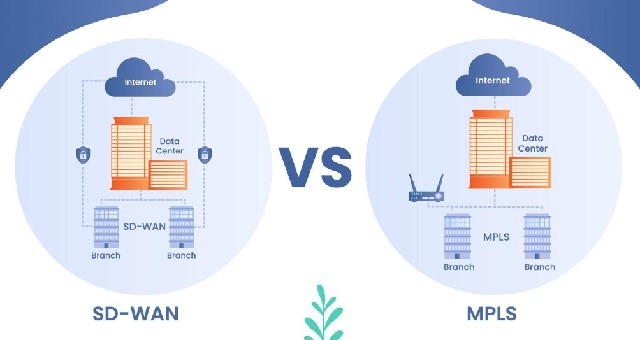Global IT supply chain
International transportation + IT O&M outsourcing + self-owned backbone network
In the realm of enterprise network construction, SD-WAN and MPLS are two highly regarded technological solutions. Many businesses face a dilemma when deciding which one to choose. This article aims to provide a detailed comparison between SD-WAN and MPLS, discussing their applicable scenarios and assisting you in making an informed decision.

Firstly, let’s understand the basic concepts of SD-WAN and MPLS.
SD-WAN, or Software-Defined Wide Area Network, is a novel network architecture based on Software-Defined Networking (SDN) technology. It leverages cloud technologies and centralized controllers to achieve intelligent management and dynamic allocation of network resources. SD-WAN offers a plethora of network control functions, including traffic optimization, security enhancement, and cost-efficiency maximization.
On the other hand, MPLS, or Multi-Protocol Label Switching, are a packet forwarding technology based on labels. They ensure that data packets are transmitted along predefined paths, delivering efficient network performance. MPLS is commonly used to connect critical nodes such as branch offices and data centers, providing reliable and stable network connections.
Next, we delve into the key differences between SD-WAN and MPLS.
In terms of network performance, MPLS is renowned for their stability and predictable performance. Conversely, SD-WAN dynamically adjusts its performance based on network traffic and conditions, enabling more efficient resource utilization.
When it comes to flexibility, SD-WAN holds significant advantages. It allows enterprises to configure and manage their networks more flexibly, adapting to changing business needs. Comparatively, MPLS offers less flexibility and are more suitable for scenarios with relatively stable network environments.
Regarding security, SD-WAN incorporates robust security features like data encryption and firewalls, effectively safeguarding network security. MPLS, on the other hand, require additional security equipment and services to achieve high security performance.
From a cost perspective, SD-WAN often presents a lower cost option. It reduces hardware investments, simplifies network management, and lowers the overall cost of ownership. In contrast, MPLS involves expensive investments in dedicated lines and equipment, resulting in higher costs.
So, how should enterprises choose between SD-WAN and MPLS? The answer lies in weighing their specific requirements.
If businesses prioritize affordability, flexibility, and the ability to quickly deploy and adjust network configurations, SD-WAN may be a more suitable choice. It is particularly suitable for scenarios such as remote offices and cloud application access, catering to the constantly evolving business needs.
On the other hand, if enterprises demand high network performance, stable connections, and predictable performance, MPLS may be more appropriate. They are suitable for critical business applications that require exceptional network performance, such as financial transactions and data center interconnects.
Additionally, the enterprise’s network environment is a crucial consideration in choosing a network connection technology. If the network environment is complex, involving multiple branches or frequent adjustments to network configurations, SD-WAN may be more suitable. Conversely, if the network environment is relatively stable with high demands on network performance, MPLS may be the better option.
In summary, SD-WAN and MPLS each have their strengths and weaknesses. The choice depends on the specific needs and scenarios of the enterprise. Making the right choice in network connection technology can ensure the stability, security, and flexibility of the enterprise network, providing robust support for business development. If you are interested in SD-WAN solutions, feel free to consult Ogcloud’s online customer service, who will provide you with professional advice and services.

International transportation + IT O&M outsourcing + self-owned backbone network

Cellular chips + overseas GPS + global acceleration network

Overseas server room nodes + dedicated lines + global acceleration network

Global acceleration network + self-developed patented technology + easy linking

Global Acceleration Network + Global Multi-Node + Cloud Network Integration


